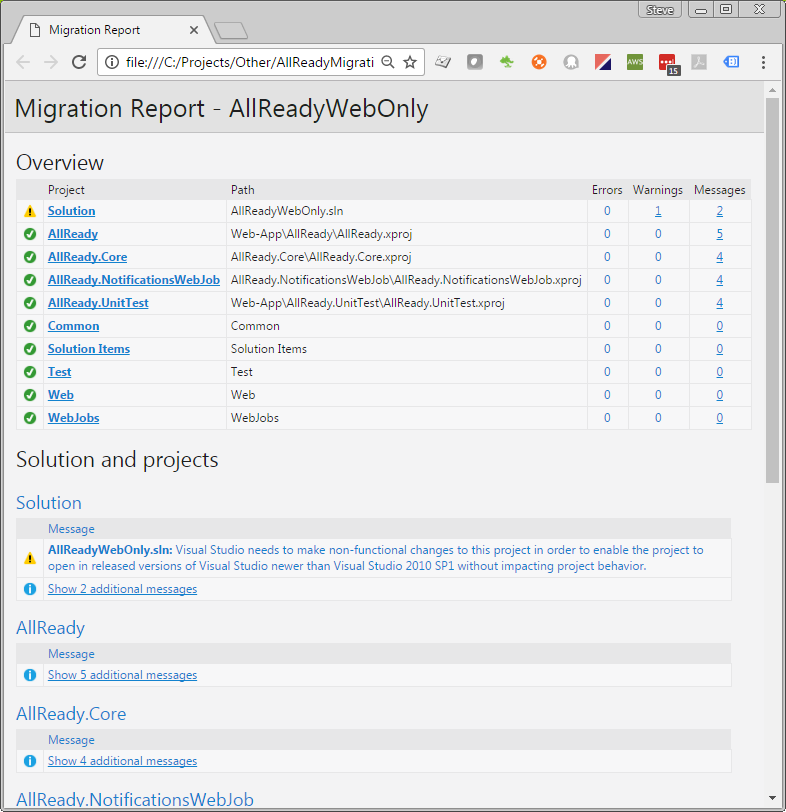- Enable Migrations Visual Studio For Macbook Pro
- Visual Studio For Mac Download
- Visual Studio For Mac Free
- Visual Studio Enable Migrations
- Enable Migrations Visual Studio For Mac Download
- Download Visual Studio Community, Professional, and Enterprise. Try Visual Studio IDE, Code or Mac for free today.
- Create Visual Studio Solution(Windows only) Enable this setting to generate Visual Studio Solution files for your Project, so you can build your final executable in Visual Studio. Create Xcode Project (Mac Only) Enable this setting to generate an Xcode project so you can build your final application bundle in Xcode.
- See full list on benjii.me.
Enable Migrations Visual Studio For Macbook Pro
In the previous chapter, you learned about automated migration which automatically updates the database schema when you change domain classes. Here, you will learn about code-based migration.
Visual Studio for Mac.NET. Azure DevOps Server (TFS) 0. Unable to use Enable-Migrations. Visual studio 2017 aspnet5 web windows 10.0. Jared Goodwin reported Mar 14, 2017 at 02:56 PM. Show comments 1. Add comment 10 40000 characters.
Visual Studio For Mac Download
The code-based migration provides more control on the migration and allows you to configure additional things such as setting a default value of a column, configure a computed column etc.
In order to use code-based migration, you need to execute the following commands in the Package Manager Console in Visual Studio:
- Enable-Migrations: Enables the migration in your project by creating a
Configurationclass. - Add-Migration: Creates a new migration class as per specified name with the
Up()andDown()methods. - Update-Database: Executes the last migration file created by the
Add-Migrationcommand and applies changes to the database schema.
To use code-based migrations, first execute the enable-migrations command in the Package Manager Console.Open the Package Manager Console from Tools → Library Package Manager → Package Manager Console and then run the enable-migrations command (make sure that the default project is the project where your context class is).
The Enable-Migrations command will create the Configuration class derived from DbMigrationsConfiguration with AutomaticMigrationsEnabled = false.

Now, you need to set the database initializer MigrateDatabaseToLatestVersion in your context class, as shown below.
Now, you have to create a migration class using the Add-Migration command with the name of your migration class, as shown below.
The above command will create a <timestamp>_SchoolDB-v1.cs file with the Up() and Down() methods, as shown below.
As you can see, the Up() method contains code for creating database objects and the Down() method contains code for dropping or deleting database objects.You may also write your own custom code for additional configurations. This is the advantage over automated migration.
To know more about add-migration command parameters, execute get-help add-migration or get-help add-migration -detailed commands in PMC, as shown below.
After creating a migration file using the add-migration command, you have to update the database.Execute the Update-Database command to create or modify a database schema. Use the –verbose option to view the SQL statements being applied to the target database.
Execute the get-help update-database or get-help update-database -detailed command in PMC to know more about the command.
Visual Studio For Mac Free
At this point, the database will be created or updated. Now, whenever you change the domain classes, execute Add-Migration with the name parameter to create a new migration file and then execute the Update-Database command to apply the changes to the database schema.
Rollback Migration
Suppose you want to roll back the database schema to any of the previous states, then you can execute the update-database command with the –TargetMigration parameter to the point which you want to roll back to.For example, suppose there are many migrations applied to the above SchoolDB database but you want to roll back to the first migration. Then execute the following command.
Visual Studio Enable Migrations
PM> update-database -TargetMigration:SchoolDB-v1
Enable Migrations Visual Studio For Mac Download


Comments are closed.